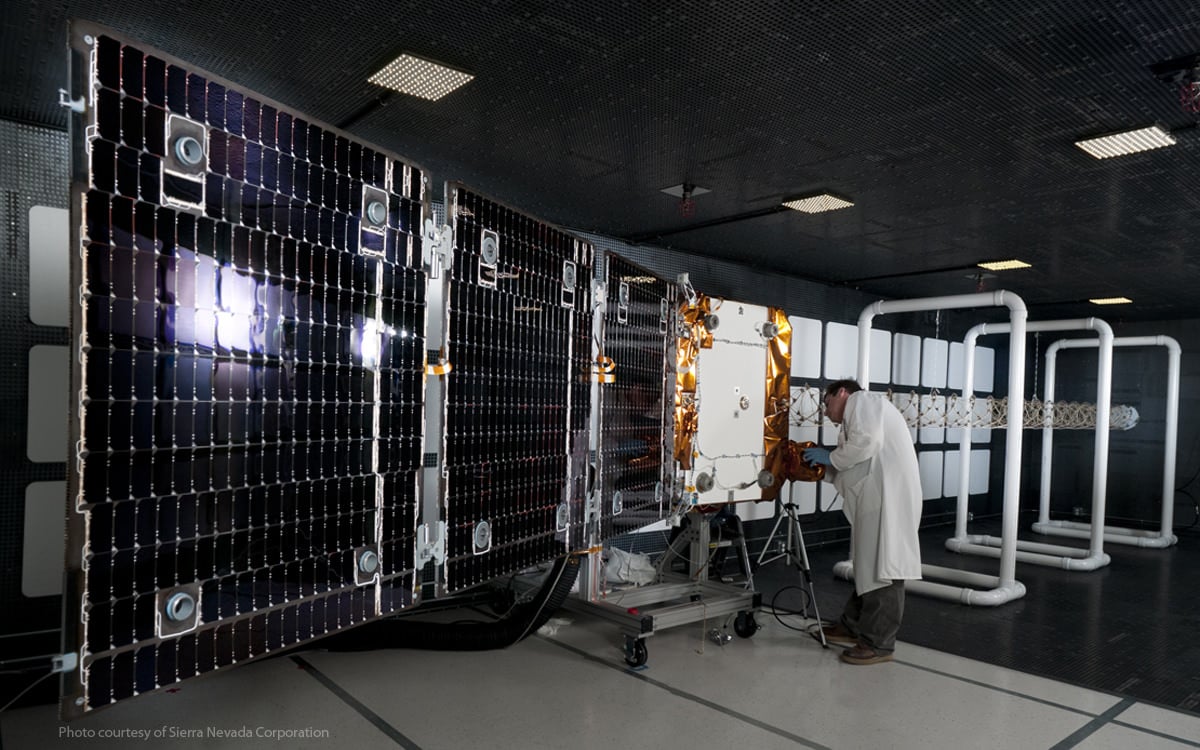The OG2 satellite being prepared for testing. Credit: ORBCOMM
The satellite that was launched to orbit as a secondary payload by the SpaceX Falcon 9 rocket on October 7, 2012 has deorbited, falling back to Earth. The ORBCOMM OG2 satellite was a prototype communications satellite that was launched along with the Dragon capsule for the CRS-1 resupply mission to the International Space Station. The satellite was sent into the wrong orbit as a result of "a pre-imposed safety check required by NASA," ORBCOMM said today in a press release, after the engine anomaly where one of the rocket's nine Merlin engines, Engine 1, lost pressure suddenly and an engine shutdown command was issued. The rocket was prevented from performing a second burn for safety reasons and the satellite was left in a lower orbit than intended.
"The safety check was designed to protect the International Space Station and its crew," the ORBCOMM press release said. "Had ORBCOMM been the primary payload on this mission, as planned for the upcoming launches, we believe the OG2 prototype would have reached the desired orbit."
ORBCOMM had said earlier they were checking into the possibility of whether onboard propulsion could be used to boost the OG2 into a higher orbit, but obviously that was unsuccessful. They did say today, however that while the OG2 was in orbit for its much-shortened time frame, they were able to obtain engineering data and "made significant strides in testing various hardware components," including an antenna that was deployed and basic functions of the satellite that were successfully turned on.
The company added that with the verifications they were able to achieve, they can now forge ahead and focus on completing and launching the more OG2 satellites, and they plan on using SpaceX to deliver them to orbit. But next time the satellites will be the primary mission payloads on two planned Falcon 9 launches, one in mid-2013 and another in 2014, putting them directly into their operational orbit.
"We appreciate the complexity and work that SpaceX put into this launch," stated Marc Eisenberg, ORBCOMM's CEO. "SpaceX has been a supportive partner, and we are highly confident in their team and technology."
The OG2 satellite was supposed be in a final 750x750 km orbit, but the company didn't verify the orbit it did end up in. According to Jonathan's Space Report, OG2 was ejected at 0137 UTC into a 203x323 km orbit, instead of its planned 350x750 km insertion orbit. Another satellite tracker,
T.S. Kelso said via Twitter
that it was in a 318 x 194km orbit.
A call to ORBCOMM to verify the orbit and location of de-orbit wasn't immediately returned.
 Universe Today
Universe Today
